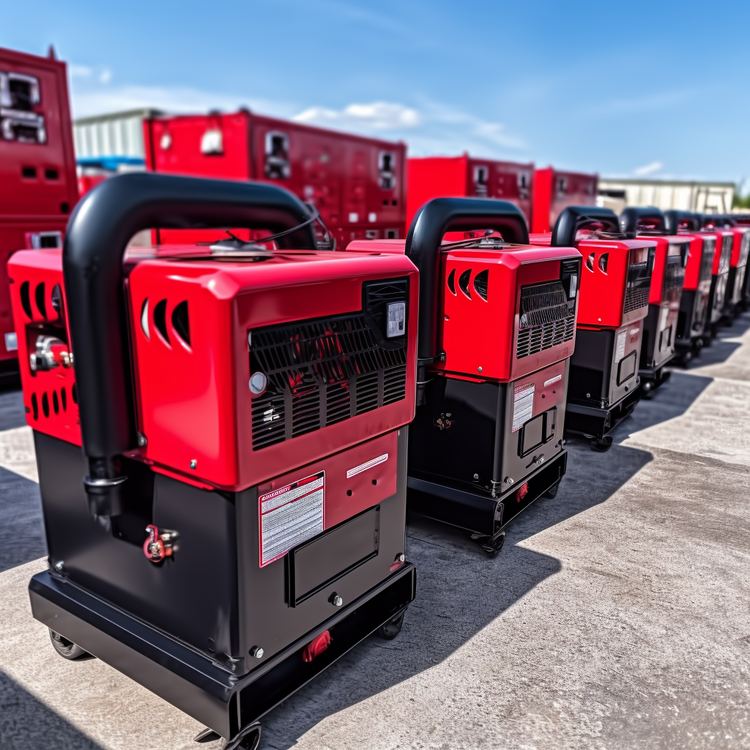Small Diesel Generators: Applications, Selection, and Integration Guide
Small diesel generators represent an important power solution for various scenarios where reliability and fuel efficiency are paramount concerns. These compact power units serve as dependable electricity sources during outages, at remote locations, or for specific applications requiring portable power. Understanding their capabilities, operational characteristics, and appropriate applications helps users make informed decisions when investing in backup or supplementary power systems.

Overview of Small Diesel Generators and Their Typical Applications
Small diesel generators serve as essential power solutions across numerous settings. In residential environments, they provide backup electricity during outages, ensuring critical systems like refrigeration, heating, and medical equipment remain operational. For small businesses, these generators prevent revenue losses by maintaining power to point-of-sale systems, security equipment, and essential operations. Construction sites rely on them to power tools and equipment in areas without grid access. Agricultural applications include powering irrigation systems, barn equipment, and processing machinery. Remote telecommunications stations often employ small diesel generators to ensure uninterrupted service. Their reliability, fuel efficiency, and extended run times make them particularly valuable in situations where consistent power is critical but utility connections are unavailable or unreliable.
Power Output Ranges Suitable for Residential and Light Commercial Use
Small diesel generators typically range from 5 kW to 50 kW, offering appropriate power solutions for various needs. Residential applications generally require 5-15 kW generators, sufficient to power essential household systems like refrigeration, heating, lighting, and communication devices during outages. Small businesses typically need 15-30 kW units to maintain critical operations, including computers, security systems, refrigeration, and basic lighting. Light industrial applications might require 30-50 kW generators to power machinery and equipment. When selecting a generator, calculating total wattage requirements is essential—add up the starting and running watts of all devices requiring simultaneous power, then include a 20% buffer for unexpected demands. Single-phase generators suit most residential needs, while three-phase models are better for commercial applications with motors and higher power demands.
Noise Reduction and Vibration Control Options
Noise and vibration from small diesel generators can create significant disturbances, particularly in residential areas or noise-sensitive environments. Modern generators incorporate several features to address these concerns. Sound-attenuating enclosures, constructed with acoustic insulation materials, can reduce noise levels by 10-25 decibels. These enclosures range from partial covers to complete housing solutions. Strategic placement on vibration-dampening mounts helps isolate mechanical vibrations from surrounding structures. These mounts, typically made of rubber or engineered polymers, absorb vibrations before they transmit to surfaces. Exhaust silencers significantly reduce engine noise, with residential-grade silencers providing 12-25 decibels of noise reduction. Additionally, strategic generator placement away from living spaces, behind sound barriers, or in dedicated generator rooms can further minimize noise impact. Some manufacturers now offer “hospital-grade” silent models specifically designed for noise-sensitive applications.
Integration with Backup Power and Emergency Systems
Effectively integrating small diesel generators with backup power systems requires careful planning and appropriate transfer equipment. Automatic transfer switches (ATS) form the core of seamless integration, monitoring utility power and automatically starting the generator when outages occur. This transition, which typically takes 10-30 seconds, can be configured for critical circuits or whole-building backup. Modern systems often incorporate smart controllers that allow remote monitoring and management via smartphone applications or web interfaces. These provide real-time status updates, fuel levels, and maintenance alerts. For comprehensive backup solutions, diesel generators can be paired with uninterruptible power supply (UPS) systems that bridge the power gap during the generator’s startup period. This hybrid approach ensures truly continuous power for critical equipment like servers, medical devices, or security systems. Proper installation requires professional electrical work, including appropriate circuit isolation, grounding systems, and ventilation considerations for exhaust management.
Tips for Selecting the Right Small Diesel Generator Based on Needs and Space
Selecting an appropriate small diesel generator requires careful assessment of power requirements, space constraints, and operational considerations. Begin by calculating your precise power needs—list all devices requiring backup power, noting both starting and running wattages, which can differ significantly for motors and compressors. Add a 20-30% capacity buffer for future expansion and unexpected loads. Evaluate your available installation space, accounting for minimum clearances for ventilation, maintenance access, and safety requirements. Most small diesel generators require at least 3-5 feet of clearance on all sides. Consider fuel storage requirements and local regulations regarding diesel storage. Portable versus stationary models present different advantages—portable units offer flexibility but typically provide less power, while stationary models deliver higher output with permanent installation. Runtime requirements impact fuel tank size decisions, with standard tanks offering 24-72 hours of continuous operation before refueling. Finally, examine the generator’s control panel features, seeking user-friendly interfaces with comprehensive monitoring capabilities.
| Generator Size | Typical Applications | Approximate Fuel Consumption | Estimated Price Range |
|---|---|---|---|
| 5-10 kW | Small homes, cabins, RVs | 0.4-0.6 gal/hr | $3,500-$7,000 |
| 10-20 kW | Medium homes, small offices | 0.6-1.0 gal/hr | $6,000-$12,000 |
| 20-30 kW | Large homes, small businesses | 1.0-1.5 gal/hr | $10,000-$18,000 |
| 30-50 kW | Small commercial, light industrial | 1.5-3.0 gal/hr | $15,000-$30,000 |
Prices, rates, or cost estimates mentioned in this article are based on the latest available information but may change over time. Independent research is advised before making financial decisions.
Maintenance Considerations for Optimal Performance
Regular maintenance ensures small diesel generators remain reliable when needed most. Establish a maintenance schedule that includes weekly no-load test runs of 10-15 minutes to circulate fluids and verify functionality. Monthly load testing under 30-50% capacity confirms the generator can handle power demands when required. Oil changes typically occur every 50-200 operating hours or annually, depending on usage patterns. Air filters require inspection every 200 hours and replacement when visibly dirty. Fuel filters should be changed annually or every 250 operating hours to prevent contamination issues. Battery maintenance, including terminal cleaning and electrolyte level checks, helps ensure reliable starting. Professional inspections annually by qualified technicians can identify potential issues before they cause failures. Maintaining detailed service records helps track maintenance history and anticipate component replacements, ensuring your generator remains ready for unexpected power interruptions.




